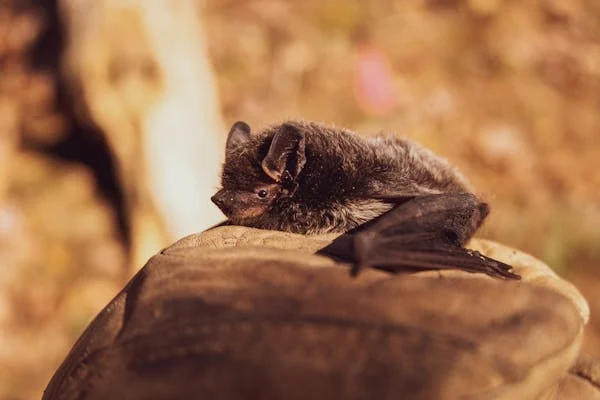Wyoming’s bat population is once again under a threat from a fungal disease that has been tracked by scientists since at least 2006.
White-nose syndrome has wiped out millions of bats in the Eastern US and Canada and researchers say it is gaining a foothold here in Wyoming.
“It’s spreading across the region, I think it’s going to cause a significant decline (of bats) in Wyoming,” biologist Ian Abernethy told Cowboy State Daily. In some bat populations, WNS has caused 100% fatality rates.
The University of Wyoming says white-nose syndrome doesn’t strike all bat species equally, so some survive. And there is hope that some vaccine trials, including in Wyoming, will be successful.
WNS was first detected in Wyoming 2018 in little brown bats near Fort Laramie. It was also detected in the Devils Tower area in 2021.
In South Dakota, however, scientists describe a mass dying off of little brown bats in the Black Hills region. Little brown bats are a welcome sight to campers and anglers because they’re voracious eaters of mosquitos and other pest insects, according to Abernathy.
In Colorado, a little brown bat was found crawling along a bike path and it was later determined that it has been sickened by white-nose syndrome.
Bats with white-nose syndrome are easy to spot because of the white coloring that forms around their snouts. The fungal infection can be lethal to many bat populations, but it doesn’t affect humans or pets.
Scientists believe the fungal infection might have hitched a ride on some fruit or “even some mud” that was onboard a cargo ship that came to shore near Albany, New York in 2006 from Eurasia.
Ever since, it has it has devastated the bat population along the east coast and spread westward. But there’s hope! Researchers say after nearly two decades of battling white-nose syndrome, bats in the Eastern U.S. are starting to build up some resistance to the infection, and survival rates among infected bats are starting to climb. So, there’s reason to think that if WNS takes a strong hold here, Wyoming’s bats will eventually develop similar immunity.
In the meantime, the University of Wyoming has partnered up with the US Geological Service and the Wyoming Game and Fish Department to launch trial vaccinations. Oral doses of the vaccine are administered to bats that have been captured by scientists.
Abernathy tells Cowboy State Daily that it’s too early to tell whether the vaccine will be effective in the long run. “In laboratory trials, it’s effective,” Abernethy said. “But it’s way harder to assess the effectiveness in wild populations.”










